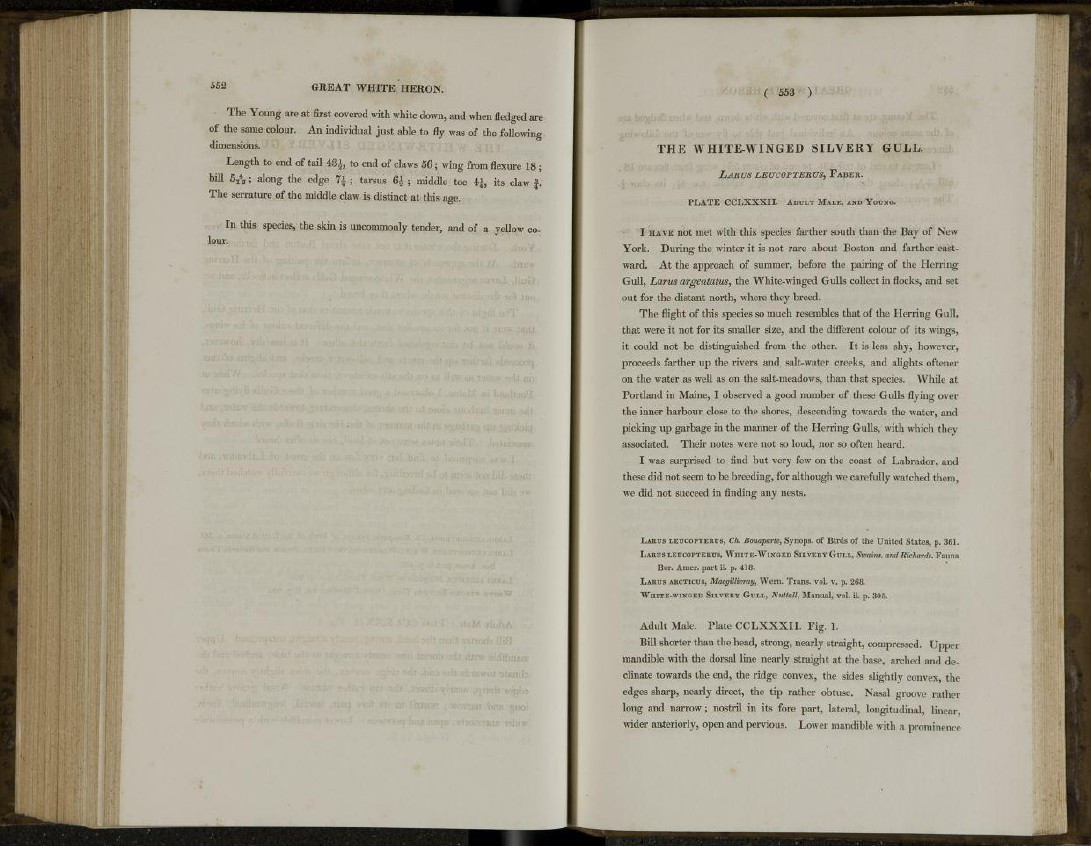
THE WHITE-WINGED SILVERY GULL.
LARUS LEUCOPTERUS, FABER.
PLATE CCLXXXII. ADULT MALE, AND YOUNG.
I HAVE not met with this species farther south than the Bay of New
York. During the winter it is not rare about Boston and farther eastward.
At the approach of summer, before the pairing of the Herring-
Gull, Larus argentatus, the White-winged Gulls collect in flocks, and set
out for the distant north, where they breed.
The flight of this species so much resembles that of the Herring Gull,
that were it not for its smaller size, and the different colour of its wings,
it could not be distinguished from the other. It is less shy, however,
proceeds farther up the rivers and salt-water creeks, and alights oftener
on the water as well as on the salt-meadows, than that species. While at
Portland in Maine, I observed a good number of these Gulls flying over
the inner harbour close to the shores, descending towards the water, and
picking up garbage in the manner of the Herring Gulls, with which they
associated. Their notes were not so loud, nor so often heard.
I was surprised to find but very few on the coast of Labrador, and
these did not seem to be breeding, for although we carefully watched them,
we did not succeed in finding any nests.
LARUS LEUCOPTERUS, Ch. Bonaparte, Synops. of Birds of the United States, p. 361.
LARUS LEUCOPTERUS, WHITE-WINGED SILVERY GULL, Swains, and Richards. Fauna
Bor. Amer. part ii. p. 418.
LARUS ARCTICUS, Macgillivray, Wem. Trans, vol. v. p. 268.
WniTE-wiNGED SILVERY GULL, JNuttall, Manual, vol. ii. p. 305.
Adult Male. Plate CCLXXXII. Fig. 1.
Bill shorter than the head, strong, nearly straight, compressed. Upper
mandible with the dorsal line nearly straight at the base, arched and decimate
towards the end, the ridge convex, the sides slightly convex, the
edges sharp, nearly direct, the tip rather obtuse. Nasal groove rather
long and narrow; nostril in its fore part, lateral, longitudinal, linear,
wider anteriorly, open and pervious. Lower mandible with a prominence